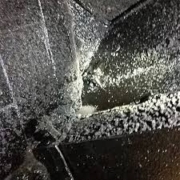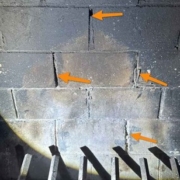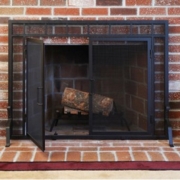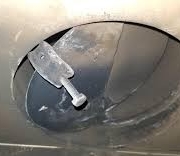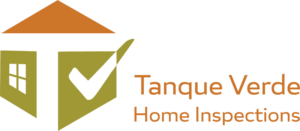Fireplace Safety
Whether your home has a solid fuel burning fireplace, gas logs, or a gas enclosed fireplace there are items you should be aware of for fireplace safety. Most of the time in the Southwest these components are only be used a few times each year. You need to have some safety checks made before lighting the first fire for the year. A home inspector performs a level 1 chimney inspection. However, a chimney contractor can perform a level 2 or level 3 chimney inspection.
Let’s start by looking at the solid fuel fireplace. There are various configurations of solid fuel burning fireplaces. The one we most associate with is the masonry fireplace that is masonry block all the way to the exterior of the home with a masonry chimney removing the smoke and carbon monoxide from the burned wood.
A fireplace insert is a metal box that has a fireproof liner installed and instead of masonry the chase the flue vent pipe vents through is wood construction. Both of these components burn wood which produces creosote that overtime builds up in the chimney and needs to be removed occasionally to help prevent flue fires occurring. The firebrick or liners inside the firebox can crack and separate overtime and need to be repaired to properly contain the fire. Additionally, some type of spark screen or glass doors should be installed across the front of the fireplace to stop the sparks leaving the fireplace and finding the floor or other combustibles.
A gas fireplace can be a fully enclosed fireplace with a solid glass panel separating the flame from the home or a gas log which may be installed in either of the two solid fuel configurations we’ve mentioned. These gas logs may have an opening glass door or ember screen. What’s different for gas versus solid fuel is the requirement for a damper clamp which keeps the damper from being closed to ensure gasses exit the home. To illustrate, with a solid flue fireplace smoke accompanies the vented carbon monoxide from the home but with gas there is no smoke and carbon monoxide poisoning becomes a potential issue if the damper were left closed.
Common in all of these systems are the need for good fire separation, the hearth, at the front of the fireplace and a proper rain/ember cap installed at the top of the chimney. When the fireplace is to be put in service something else to consider is nesting birds or other critters in the chimney. They can leave debris that is combustible or that will block the flow of exhausted gasses from the home.
At Tanque Verde Home Inspection we want to help you feel confident when looking forward to that first crackling, warming fire of the year and be able to do that without unwanted surprises. Maintenance evaluations of your home and fireplace should be considered every two-three years if you haven’t had your home evaluated recently, consider calling us for a preventative maintenance home inspection before the fire season starts.
To schedule a preventative maintenance home inspection, call us at 520-462-8844 or schedule directly on our website.

